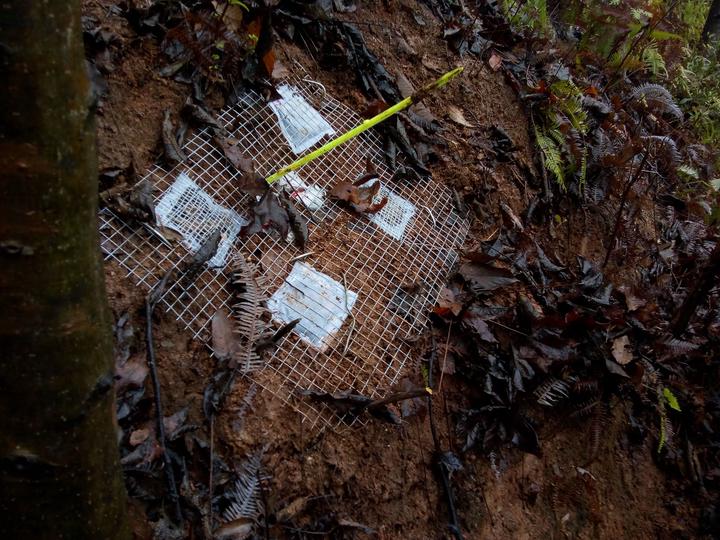Tree diversity effects on litter decomposition are mediated by litterfall and microbial processes

Abstract
Forest ecosystems are critical for their carbon sequestration potential. Increasing tree diversity has been shown to enhance both forest productivity and litter decomposition. Litter diversity increases litter decomposability by increasing the diversity of substrates offered to decomposers. However, the relative importance of litter decomposability and decomposer community in mediating tree diversity effects on decomposition remains unknown. Moreover, tree diversity modulation of litterfall spatial distribution, and consequently litter decomposition, has rarely been tested. We studied tree diversity effects on leaf litter decomposition and its mediation by the amount of litterfall, litter species richness and decomposability, and soil microorganisms in a large-scale tree diversity experiment in subtropical China. Furthermore, we examined how litter functional identity and diversity affect leaf litter decomposability. Finally, we tested how leaf functional traits, tree biomass, and forest spatial structure drive the litterfall spatial distribution. We found evidence that tree species richness increased litter decomposition by increasing litter species richness and the amount of litterfall. We showed that soil microorganisms in this subtropical forest perform 84–87% of litter decomposition. Moreover, changes in the amount of litterfall and microbial decomposition explained 19–37% of the decomposition variance. Additionally, up to 20% of the microbial decomposition variance was explained by litter decomposability, while litter decomposability itself was determined by litter functional identity, diversity, and species richness. Tree species richness increased litter species richness and the amount of litterfall (+200% from monoculture to eight-species neighborhood). We further demonstrated that the amount of species-specific litterfall increased with increasing tree proximity and biomass, and was modulated by leaf functional traits. These litterfall drivers increased the spatial heterogeneity of litter distribution, and thus litter decomposition. We highlighted multiple biomass- and diversity-mediated effects of tree diversity on ecosystem properties driving forest nutrient cycling. We conclude that considering spatial variability in biotic properties will improve our mechanistic understanding of ecosystem functioning.